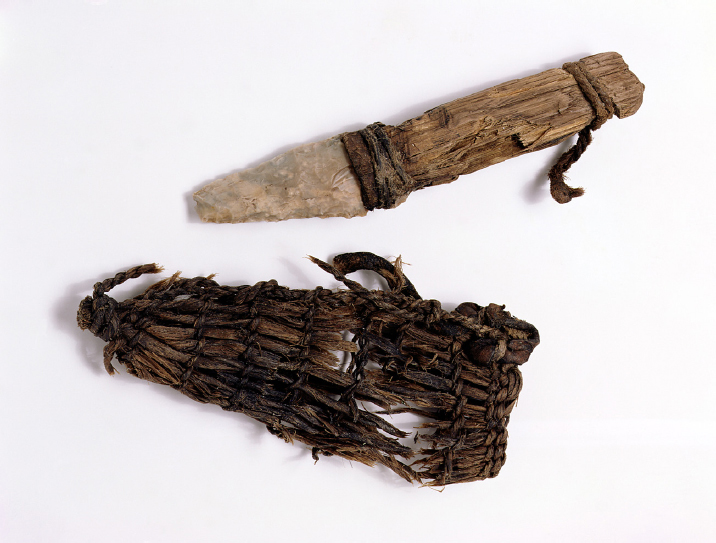Document 1.2
Dagger and Scabbard
The dagger found with the Iceman was made using similar construction techniques as his ax. The dagger’s blade was made of stone instead of copper, but it, too, was attached to a wooden handle with a leather cord. The woven scabbard (case) provides significant clues to the dagger’s use. First, it attests to the sharpness of the blade and the Iceman’s interest in protecting the blade from damage. Second, the scabbard suggests that the dagger was meant to be carried on the Iceman’s person, possibly tied to a belt with a leather cord. Given this, perhaps the dagger was meant to be used as hunting tool, allowing the Iceman to clean and gut game at the hunting site. It is also possible that the Iceman carried the dagger for self-

Questions to Consider
- In your opinion, was the dagger intended primarily as a weapon or a tool? What arguments can you present to support your position?
- How did the dagger differ from the stone-
cutting tools created by Paleolithic peoples? In what ways was it similar?